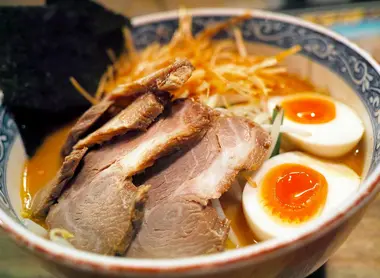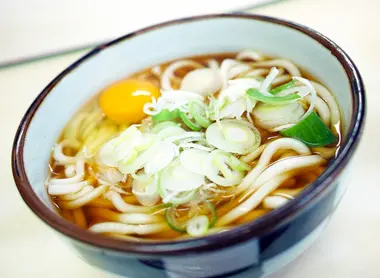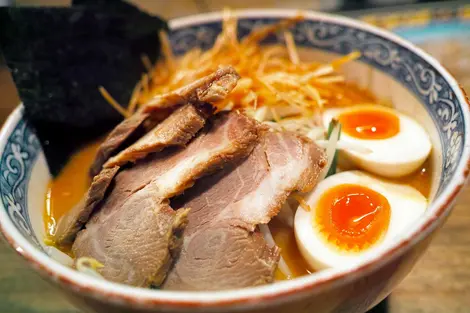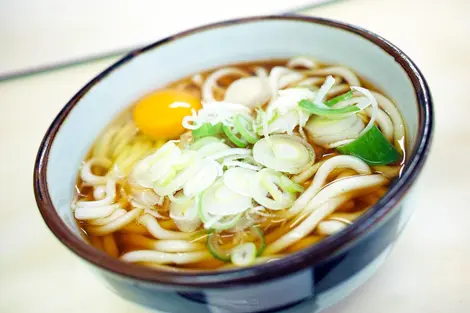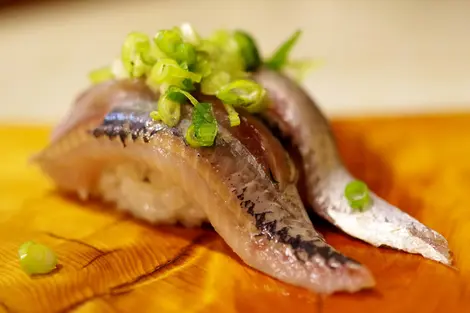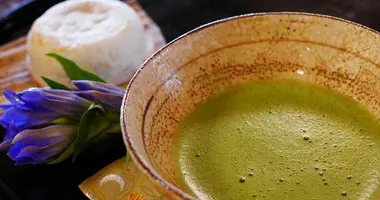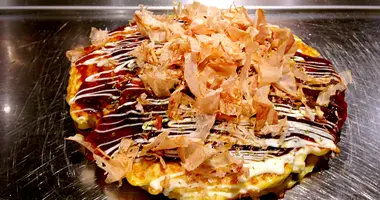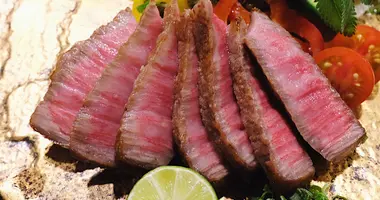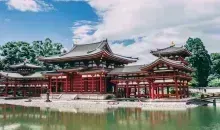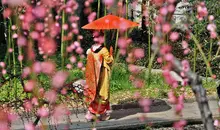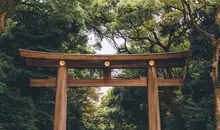Where to take cooking classes in Japan?
- Published on : 11/06/2019
- by : Ph.L
- Youtube
When cultural discovery happens on the plate
Japanese cuisine offers an exceptional immersion in Japanese culture, allowing you to discover Japan through its emblematic flavors and ancestral culinary techniques. Even without knowing the Japanese language, many establishments throughout the archipelago offer courses in English, making this experience accessible to all foreign visitors. Whether you're passionate about preparing sushi, tempura or okonomiyaki, you're bound to find a course to suit you, from professional schools to homestays. These culinary workshops are an original and convivial way of getting in touch with everyday Japanese culture, far from the traditional tourist trails.
Professional cooking schools in Japan
Professional cooking schools can be found in most major Japanese cities, attracting students from all walks of life. Taught by qualified chefs, these courses are aimed at both amateurs and those wishing to perfect their skills in the Japanese culinary arts.
The ABCCooking Studio school is certainly the most renowned in the country, with 125 locations throughout Japan. Its success is such that it has even been exported to Hong Kong and Taiwan. For around 5,000 yen (40.65 euros) an hour and a half, you can learn about Japanese specialties such as tempura and maki, as well as European patisserie. Their program is regularly updated, always offering new recipes to explore. For more information, visit their official website: https: //www.abc-cooking.co.jp/english/.
For those looking for more advanced training, some establishments like Le Cordon Bleu Japan offer complete programs combining Japanese language learning, culinary techniques and restaurant internships. These programs offer a real professional immersion and can even be financed by scholarships for foreign residents wishing to deepen their knowledge of Japanese cuisine.
Tokyo cooking schools for foreigners
Tokyo, Japan's capital and the center of Japanese gastronomy, is full of schools offering courses specially designed for foreigners. These establishments offer an introduction to Japanese culinary techniques in an appropriate setting, with explanations in English.
Cook! Asakusa Kappashi is a small school east of Tokyo, founded by Yumi Shinya, a young Japanese woman passionate about sharing her culinary culture. For 4,500 yen (36.60 euros), participants benefit from classes lasting between 1h30 and 2h30, focusing on everyday Japanese cooking. You'll learn how to prepare miso soup or udon, for example. The atmosphere is particularly family-friendly, and all ages are welcome, making this a perfect activity for families. For more information, visit https://www.cook-asakusa.com/.
Kai House Cooking, founded in 1908 by a kitchen knife designer, is one of Tokyo's oldest cooking schools. Located in Iwamotocho, near Kanda station, the school makes its famous knives available to participants for cooking sessions in small groups of 4 to 10 people. The two-hour courses start at 5,000 yen (40.65 euros) and are supervised by experienced instructors. For more information: https: //www.kai-group.com/mm/washoku/.
For a more intimate experience, Cooking at Home with Akiko lets you discover traditional Japanese cuisine in the home. Akiko, who has been cooking professionally for many years, welcomes you to her home in the Hongo district (between Ueno and Ochanomizu) to teach you the secrets of authentic, mainly plant-based cooking, faithful to Japanese family traditions.
Learn traditional cooking in Kyoto
Kyoto, the former imperial capital of Japan, is considered the sanctuary of Japanese culinary traditions. The city offers a multitude of opportunities to discover authentic Japanese culinary art, from traditional cooking classes to tea ceremonies.
Sakura Cooking Class is one of Kyoto's most renowned schools, offering a vast selection of traditional recipes. Students can learn how to prepare popular dishes such as okonomiyaki and gyoza, as well as the delicate art of bento preparation and Japanese breakfasts. The school also offers introductory courses in the tea ceremony and ikebana (Japanese floral art), although these are generally taught in Japanese for beginners. For information on prices and timetables: https: //sakura-kyoto.jp/cooking-class/.
In Kyoto, you can also take part in Izakaya-style cooking classes, where you can learn how to prepare dishes typical of traditional Japanese taverns. These courses usually last around 3 hours, during which you'll learn to cook five or six popular home-cooked dishes under the guidance of an expert chef. At the end of the course, you'll taste your own creation and share the meal with the other participants, in a typically Japanese convivial atmosphere.
The tea ceremony is another of Kyoto's not-to-be-missed culinary experiences. During these 45-minute sessions, you'll discover the traditional ritual of preparing matcha tea, learn how to use specific utensils and taste typical Japanese sweets. This immersion will give you an in-depth understanding of ancient Kyoto's history and cultural traditions.
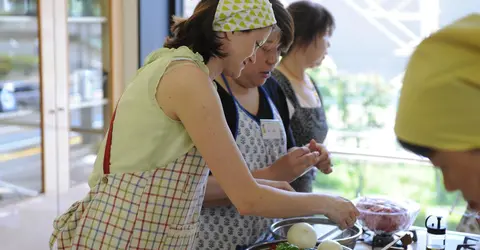
There are lots of ways to take a cooking class in Japan. Whether at the teacher's home or at a professional school.
Flick/ U.S Army Garrison Japan
Community platforms for authentic cooking classes
For those seeking a more authentic experience and direct contact with the locals, several community platforms offer the chance to take part in cooking classes organized by passionate Japanese.
Meetup is a world-renowned platform for connecting people of all nationalities with similar interests. In Japan, the app is packed with cooking classes organized by passionate amateurs all over the country. To take part, simply register on the app and apply for free membership of the groups that interest you. The moderators will then inform you of the course prices and times, and usually organize the sessions in a friendly atmosphere in their own homes. These sessions often end with a shared dinner where students and teachers enjoy the fruits of their labor together. Access the platform at: https: //www.meetup.com/fr-FR/cities/jp/?country=jp&zipstatecity=.
The Tadaku platform allows you to cook directly in Japanese homes. The concept is simple: after sending a request to the site, you'll receive a program of recipes tailored to your preferences. You'll then be invited into a Japanese family home to prepare and share a meal, while learning about the local culture. This experience will also enable you to discover residential areas not usually frequented by tourists, offering an authentic insight into the Japanese way of life.
Private lessons and personalized culinary experiences
For those who prefer a more personalized approach, or who don't feel comfortable in a group, there are several private tutoring options available across Japan.
The Airkitchen platform specializes in one-to-one or very small group cooking classes in private homes. It's a great way to improve your culinary skills while making connections abroad. It's easy to use: just enter your desired location on the official website and browse the available listings. Course duration and price vary according to the host, so you're sure to find a package to suit your time and budget. To find out what's available: https: //airkitchen.jp/.
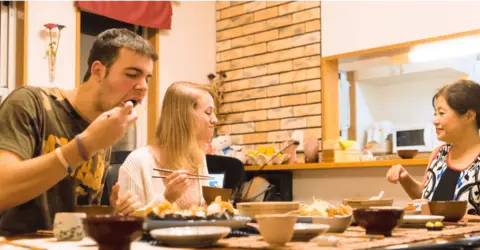
Airkitchen brings together food lovers from all over the world!
Airkitchen.JP
For an even more immersive experience, some chefs offer in-home courses. In Tokyo, for example, you can take part in Cooking at Home with Akiko, where a professional chef welcomes you into her home to teach you the secrets of traditional Japanese cuisine. Depending on your tastes, you can learn to cook dishes that are easy to reproduce at home, or discover the unique flavors of local Japanese cuisine.
TheJapanese Culinary Institute, located in Atami, also offers customized programs ranging from a few days to several weeks. These courses cover various aspects of Japanese cuisine, from traditional culinary techniques to sushi making and sake brewing. The school even offers a restaurant planning assistance program for those wishing to open their own Japanese cuisine establishment abroad.
Budget and prices for cooking courses in Japan
Prices for cooking courses in Japan vary considerably, depending on the type of establishment, the length of the course and the complexity of the dishes taught. Here's an overview of prices to help you plan your budget.
For professional schools, expect to pay between 4,500 and 5,000 yen (36-40 euros) on average for a course lasting between 1h30 and 2h30. This is the case at ABCCooking Studio, Cook! Asakusa Kappashi or Kai House Cooking.
Private lessons or home cooking via platforms such as Airkitchen are generally a little more expensive, with prices ranging from 6,000 to 12,000 yen (50-100 euros) depending on duration and menu. This price difference is justified by the personalized aspect of the experience and the more intimate setting.
For more comprehensive courses, such as those offered by the Japanese Culinary Institute in Atami, prices are much higher:
- 7-week course: approx. 6,900 USD (tuition) + 3,000 USD (registration fee)
- 4-week course: approx. 3,800 USD (tuition) + 1,500 USD (registration fee)
- One-week course: approx. 2,400 USD (tuition) + 500 USD (registration fee)
In Kyoto, introductory courses in Japanese cuisine vary according to the type of experience:
- Izakaya cooking class: from €67 per person for around 3 hours
- Bento preparation: from €67 for approx. 3 hours
- Tea ceremony: from €25 for approx. 45 minutes
- Nishiki market tasting and tour: from €180 for approx. 3 hours
Practical tips for booking your cooking class
To make the most of your culinary experience in Japan, here are a few practical tips to help you prepare for your stay and choose the cooking class that's right for you.
Book well in advance, especially for the most popular schools or during peak tourist season (spring for cherry blossom and autumn for red maple). Most establishments accept online bookings, which makes organization much easier.
Check dietary restrictions: if you have allergies, intolerances or follow a special diet (vegetarian, vegan, gluten-free, etc.), be sure to inform the school or teacher in advance. Most establishments can adapt their recipes accordingly if you let them know.
Consider the language barrier: although many courses are taught in English, the level may vary. Don't hesitate to ask about instructors' level of English if this is an important issue for you.
Adapt your choice to your schedule: course durations can vary considerably, from one hour to a full day. Choose a package that fits in with your tour schedule.
For families traveling with children, check the minimum age required to participate. Some schools, such as Cook! Asakusa Kappashi welcome children and even offer courses specially designed for families.
Last but not least, respect Japanese culinary traditions when taking part. The Japanese are very attached to etiquette, especially when it comes to the use of chopsticks. Don't hesitate to ask your instructor for advice if you have any doubts.
To find out more about traditional Japanese food, you can consult specialized guides before you leave, so that you'll have a better understanding of the ingredients and techniques you'll discover during your cooking course.
Whether you choose to take a course at a professional school, at a home-stay or via a community platform, this culinary experience will deepen your knowledge of Japanese culture and provide you with techniques and recipes that you can reproduce at home to extend your trip. Bon appétit and enjoy your trip to the Land of the Rising Sun!
